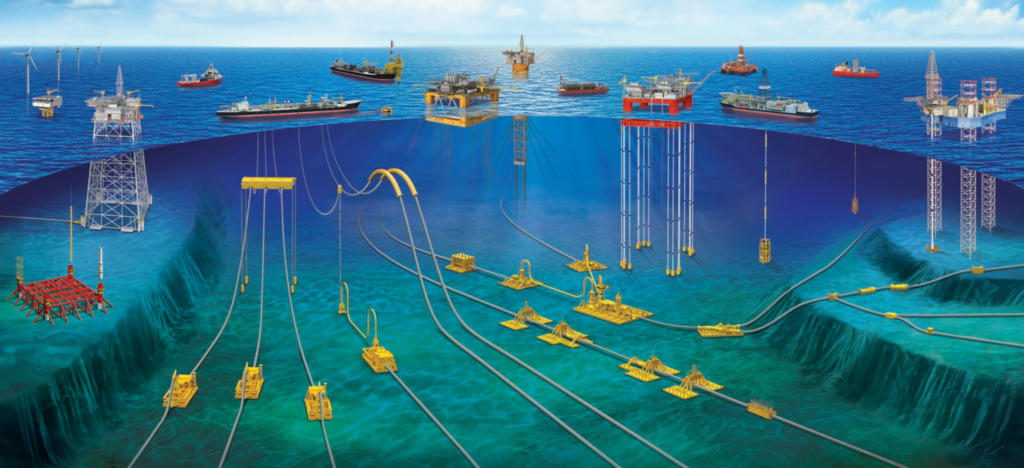Seu nome é simples, mas a tecnologia de construção e o conteúdo técnico são bastante altos. É a “linha de vida” do sistema de produção de petróleo e gás offshore - “oleoduto submarino e gasoduto”. Não importa como um campo offshore seja desenvolvido, é necessário transportar petróleo e gás de dentro da formação para uma plataforma, FPSO ou terminal onshore, e colocar um pipeline submarino é a maneira mais direta e eficiente de transportá -lo.
Como é um pipeline submarino?
O oleoduto submarino é colocado no fundo do mar, transporte contínuo de petróleo, gás, oleoduto. Para desenhar uma analogia: as instalações de petróleo e gás offshore são um "ponto" valioso, apenas através da "linha", como oleodutos e gasodutos para conectar o "ponto", a fim de formar um sistema completo, reproduza o valor geral do sistema de produção.

△ Tubo plano submarino: colocado no fundo do mar, é a principal força do transporte submarino de petróleo e gás.

△ Tubo de dobra de expansão: usado para conectar o tubo plano e o riser submarino. Afetado pela diferença de temperatura da água do mar, o tubo de aço tem o fenômeno da expansão térmica e a contração a frio, e o tubo de dobra de expansão pode compensar a mudança do comprimento do tubo do mar.

△ Tubo riser: um tubo vertical no fundo do mar que conecta um tubo plano no fundo do mar a uma instalação de produção offshore.

△ O tubo riser nas águas rasas são tubos de aço fixados nas pernas da plataforma.

△ O tubo vertical em águas profundas geralmente fica na água em um estado livre, como risers de pré-tensão (TTR), risers de catenários de aço (SCR), risers flexíveis, risers de torre, etc.

△ Conexão cruzada: conecta a árvore ao coletor de produção.

De acordo com a produção do campo de petróleo (petróleo, gás, água) e produção, selecione o diâmetro do tubo correspondente e a estrutura do tubo offshore.

